You can classify customers into different segments, or groups, by using the Customer Groups feature. Customer groups allow you to organize your customers, give them discounts, and restrict access to specific products or categories.
With Customer Groups, you can:
- set up a loyalty group — give access to specific products or categories at discounted rates to select customers
- set up a tax-exempt group — offer tax exemption to those that are eligible (such as government agencies, nonprofit organizations)
- set up a wholesale group — provide access to select products or categories hidden from retail customers, or give a discount for bulk purchases
- set up a members-only group — control access to content or products by requiring visitors to register an account to browse the store
How Customer Groups Work
Customer groups define which product categories are visible to visitors on your storefront, and they allow you to establish storewide pricing rules for different customer segments. Guest shoppers and customers with storefront accounts automatically get access to the categories and pricing from their respective default groups, but you can also create distinct groups for different types of customers, such as retailers or VIP members.
In addition to configuring catalog and pricing rules for customer groups, you can:
- Create customer group-specific Price Lists with advanced pricing logic
- Configure tax zones for customers with special tax requirements
- Build promotions that provide discounts to certain customer groups
Using B2B Edition? Customer groups interact uniquely with your B2B buyers and their Company accounts. See Companies for more information.
Requirements
Customer groups are only available for stores on a Plus plan or higher.
In order to manage customer groups, you must have the following permissions enabled in your user account:
- Manage Customers
- Manage Channels
- Manage Categories
- Customer Groups
The maximum number of customer groups that can be viewed when selecting default customer groups is 10,000.
Creating Customer Groups
To create a customer group, go to Customers › Customer Groups, then click Create a Customer Group. Next, you'll need to enter a group name and configure your group details. The group name is for your purposes only and will not be visible to your customers. You can also set category, product, and storewide discounts for your customer groups.
Customer groups can be duplicated by using the Copy action found in the Action menu.
Group Details Settings
When configuring your group access settings, selecting a parent category does not automatically select its child categories. You must click on the parent category to expand and display all of its child categories, and then select the child categories to be included.
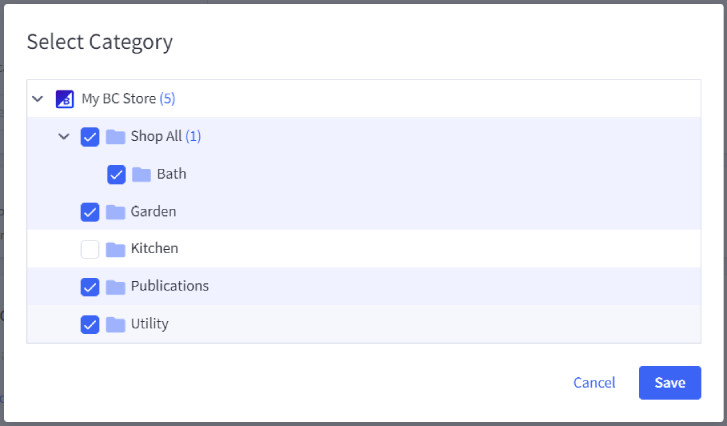
Adding a high number of categories to a customer group may affect control panel load times. We recommend using our API if you plan on assigning hundreds of categories to your customer groups. See the Dev Center for more information.

- Group Name — The name of the customer group you are creating. This name is not visible to customers.
- Group Access:
- Customers in this group can see products in all categories across all channels — Used to allow the group access to all visible categories. Uncheck this setting to choose which storefront channels and categories the group can and cannot access by using the category selector. Customer groups must have at least one category selected as accessible.
Did you know? If a customer group has limited category visibility, where not all categories are visible to the group, newly created categories are automatically not visible to the group. New category visibility must be enabled in the customer group settings.
Pricing
Plus, Pro, and Enterprise stores can use customer group discounts, which includes category and product discounts, as well as storewide discounts. Stores on an Enterprise plan can also use Price Lists to provide custom pricing for customer groups. Keep in mind that price lists and customer group discounts are exclusive and cannot be combined on individual customer groups — if you wish to use customer group discounts on a group currently assigned to a price list, you will need to first unassign the price list.
If you have multiple channels enabled on your store, you can view and select product categories and products in all of your channels, allowing for greater customization of product discounts between storefront channels.
Coupon codes cannot be restricted based on customer group. If a customer in a group which has a discount chooses to use a coupon code, they will be able to combine both and receive a larger discount.
Additionally, discounts do not double up if multiple category discounts are in place. For example, if you have both a storewide discount and a category discount, only the category discount will apply to the order.
Coupon promotions can be restricted to specific customer groups, allowing you to limit the discount to groups such as wholesale, high-value, or new customers. For further information, see our article on Coupon Promotions.
Category Level Discounts
To create a category level discount, click + Add category level discount.
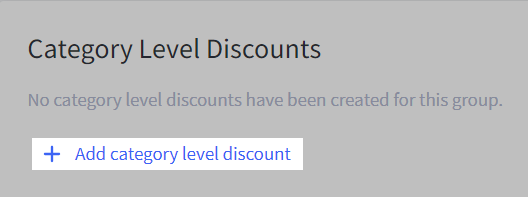
Use the category selector to assign a category. Choose whether the discount will apply to the main category alone or to the primary category and any subcategories by enabling the "Include sub-categories" checkbox. Select whether it will be a price, percentage, or fixed discount, then enter the discount amount. You will not be able to set a value of $0 for price or percentage discounts.
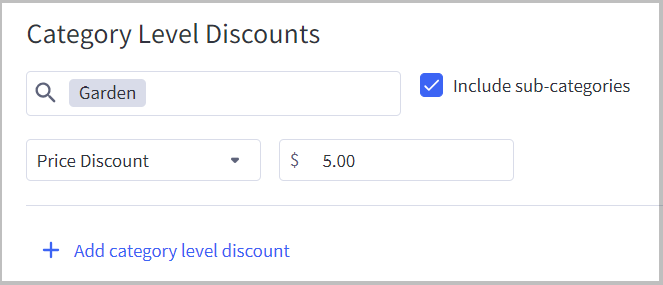
Adding or removing discounts? Click + Add category level discount to add a new discount line or click the trash can icon to the right of each discount to remove it.
Product Level Discounts
To create a product level discount, click + Add product level discount.
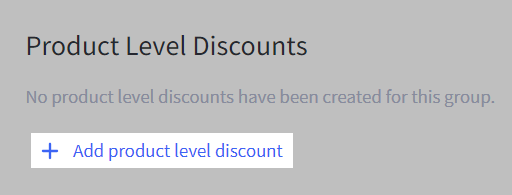
Use the product selector to assign a product. In the pop-up that displays, search for a product by its name or SKU, or manually select it from the product list.

After assigning the product, select whether it will be a price, percentage, or fixed discount, then enter the discount amount. You will not be able to set a value of $0 for price or percentage discounts.

Storewide Discounts
To create a storewide discount, enter the discount amount and select whether it will be a price, percentage, or fixed discount.

Managing Default Customer Groups
Go to Customers › Customer Groups and click Manage Default Customer Groups.
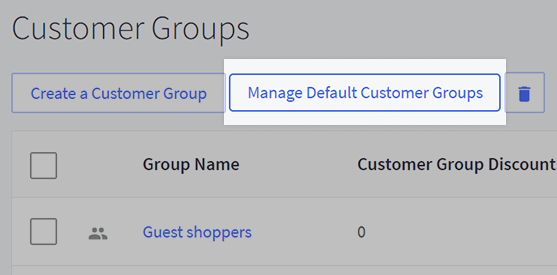
You can set a default group for both guest customers and new customers who have created an account.
If you have multiple channels, first specify global groups for guests and registered customers, then configure each of your channels to either use the global groups (Use Global) or you can specify their own channel-specific default groups.
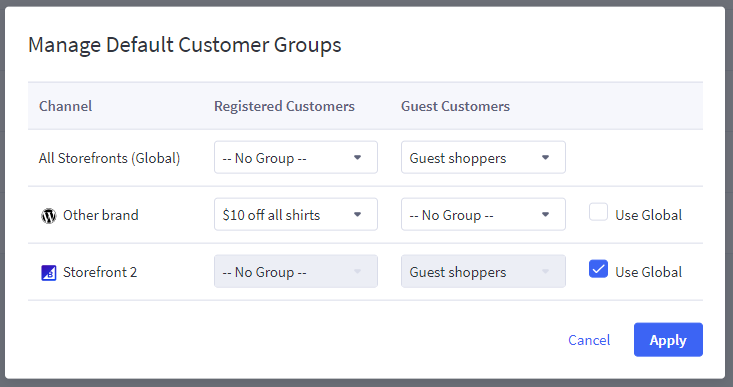
Assigning Customers to Groups
Once your groups have been created, you'll need to assign customers to those groups by going to Customers › View Customers.
Select a customer group from the Group drop-down list. Your change will be saved automatically.
Need to assign multiple customers? Customer groups can also be assigned via a CSV import or using the API. See the Dev Center for more information.
Wholesale and Retail Groups
Wholesale customers usually have access to products or bundles of products not available to retail customers, and they often have a discount on the products they buy. Both of these can be set up by using the Customer Groups feature.
To restrict wholesale products from retail customers, you will first need to create a category specifically for those products. Then, you will need to segment your customers, so that only wholesale customers can view those products.
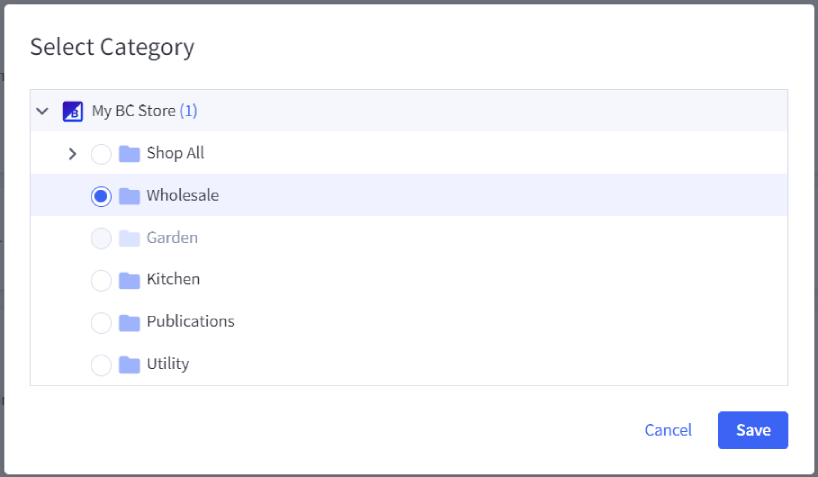
Don't forget to set up the discounts that your Wholesale group may need.
After you have set up your wholesale products and customers, you then need to segment your retail customers so that they only see your retail products. When creating your Retail customer group, you can accomplish this by checking all of your categories, except for the Wholesale category.
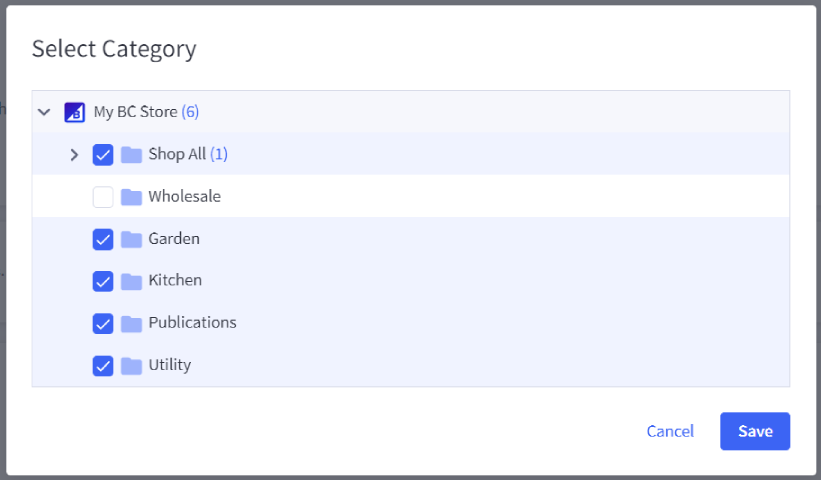
Under Manage Default Customer Groups (see above), set Registered Customers and Guest Customers to default to your Retail group.

After you've confirmed your wholesale buyer, you can manually move them to your Wholesale customer group (see Assigning Customers to Groups).
Member-Only Content
The ability to have "member-only" content is not a native feature of BigCommerce. However, the customer groups feature can be used to require customers to register for and log in to their accounts before they can access particular content. For example, if you sell exclusively to wholesalers, you will need to block the general public from being able to order from your store without first signing up for an account.
You will first need to create a category that non-members and members who are not logged in can see that provides them with instructions for accessing your content.
Next, you will need to create a customer group for anyone not signed into an account that restricts their access to the Sign In or Create an Account web page.
Then, you will need to create a customer group which grants members access to view your products.
Finally, under Manage Default Customer Groups, you'll set Registered Customers to your members-only group, and Guest Customers to your non-members/non-registered group.
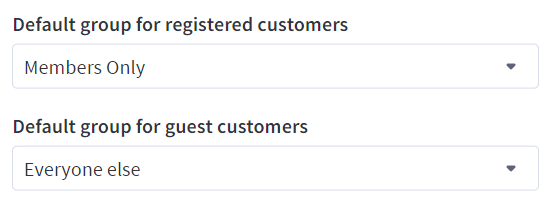
FAQ
Why can't I see some of my customer groups while assigning default groups for registered and guest customers?
If you have more than 10,000 customer groups, any groups after the first 10,000 will not appear when selecting default customer groups from the drop-down menus. If you want to assign a default customer group that doesn't appear in the list, you can do so via the API.
Can I add a customer to more than one customer group?
No, you can only assign a customer to a single group. If your store is on an Enterprise plan, you can assign a customer to multiple customer segments via the API. You can include or exclude multiple segments in promotions created with the standard editor; however, segments do not define a customer’s product availability and pricing on the storefront like customer groups do.


